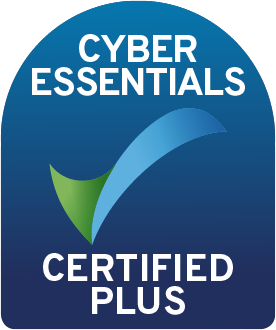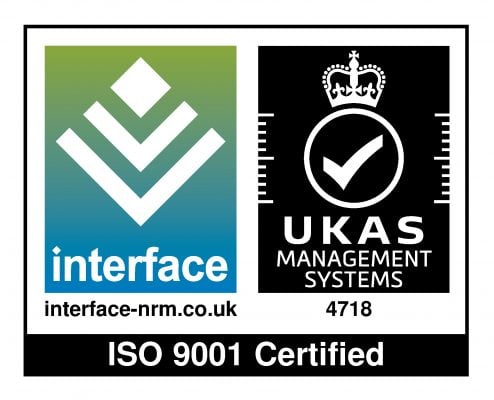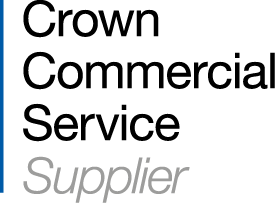Choosing a new learning management system (LMS) can be a lengthy and complex process, especially for UK SMEs with limited administrative time and internal resources. That’s why we’ve created a practical 20-step LMS buyer checklist, built specifically for UK organisations with 20-500 learners.
This checklist covers everything from goals to integrations, along with compliance, migration, and cost transparency. This free resource is designed to help you confidently choose the right platform for your needs and avoid the common pitfalls we see SMEs encounter during a process that can often feel unnecessarily overwhelming and overcomplicated.
Who is this for?
We’ve designed this for UK-based SMEs with 20-500 learners. If you’re responsible for key L&D processes such as compliance training or employee onboarding, while juggling multiple priorities with a small team, this guide is for you.
This guide works whether you’re evaluating Moodle, Totara, or other vendor-hosted LMS platforms, and whether you’re replacing a legacy system or starting from scratch. You can easily adapt this guide to suit your specific needs and situation..png?width=1080&height=150&name=Slim%20blog%20CTAs%20(12).png)
How to use this checklist
This checklist isn’t just a passive tick-box exercise; it should be used as a structured decision-making tool to help you find your new LMS platform.
Choosing a new LMS platform isn’t an everyday activity for SMEs. In fact, if done correctly, it should be a one-time, long-term decision. As it’s such a rare occurrence, the buying process can soon become overwhelming. What’s more, plenty of providers claim to offer a ‘complete solution’ but fall short on the final product, making the stakes even higher. That’s why this checklist is the ideal tool to help you cut through the noise with a simplified process that works for you, whether choosing your first LMS platform or switching from an underperforming legacy system.
To use this checklist, we recommend taking a ‘two-pass’ approach.
First pass: Must-haves
These are your non-negotiables, such as the features, functions, and outcomes that your LMS must deliver from day one. To get the most out of this process, you need to be strict here. If an LMS or vendor doesn’t meet your essential requirements, it’s probably not the right fit and won’t serve your company’s needs.
Examples: Automated enrolment and reminders for compliance management or SCORM content support.
Second pass: Nice to haves
Next, revisit your checklist and highlight features that would be valuable for your organisation but not critical. This second pass helps you differentiate between vendors who simply meet the brief and those who could help you scale or improve your ROI through long-term LMS platform use.
Examples: Offline mobile access for learning on the go or multi-language support.
How much time will I need?
This checklist is designed for SMEs, so you won’t need a full project team or weeks of research to get started. Importantly, it should be used to set interim estimates and create a near-decision briefing document that can guide your conversation with potential vendors.
We recommend tackling it over a two to three-hour block, working through items you can answer without a vendor in mind: goals, audience, scale, integrations, roles and responsibilities, etc. For any item that you are unsure about, simply mark the line as ‘Park’ so you can come back to it once you have additional information.
You should be able to complete enough of the checklist across the 2–3 hours to be able to begin your vendor shortlist and request demos. The information gained from these can then easily be slotted back into the checklist.
The 20-step LMS buyer checklist for UK SMEs
We’ve grouped this checklist into five themes, which we’ll outline in greater detail below. You'll also notice that under each section, we've provided a table as an example to help you structure your planning and thinking. Treat each row and column as a prompt: adapt the requirements, tweak the minimum standards and add columns that reflect your team, your sector, and your constraints.
In short, customise freely as the value in the table and the checklist is in creating a consistent, shared framework that enables your team to compare options like-for-like and make faster, better decisions when purchasing your LMS platform.
1. Strategy and outcomes
Before you start comparing LMS platforms, you need to know what you’re trying to achieve. What does ‘success’ look like for your organisation? This is your chance to define desired outcomes and build your strategy around goals and objectives that will drive a measurable impact.
Once identified, you can use this section to ensure your ideal LMS aligns with these goals and objectives. We suggest taking your time here, as it will shape everything that follows.
2. Trust, compliance, and accessibility
For any UK SMEs, particularly those in regulated industries, trust and compliance are critical. From GDPR to audit trails, your LMS platform needs to adhere to compliance requirements, support inclusive learning, and ensure you’re always audit-ready. It’s no mean feat, so choosing the right LMS at this stage can be the difference between compliance success and non-compliance disaster.
This section helps you assess whether each learning management system meets UK standards for key compliance areas.
3. Operations and integrations
Many LMSs offer a range of shiny features and functionality, but it’s only worth its weight in gold if it seamlessly fits into your day-to-day operations. Does it integrate with your existing tools, such as HR software or Microsoft Teams? Can it automate repetitive and time-consuming admin? Can your management teams access relevant reporting data without needing IT support?
This section will help you assess the key requirements that can reduce admin, simplify operations and improve functionality across your organisation
4. Experience and delivery
It’s easy to focus on features and functionality or ticking the right compliance boxes, but if your new LMS platform feels clunky, slow, or confusing, engagement and platform use will suffer. This is why learner experience and delivery are key.
This section focuses on real-world usability by exploring mobile optimisation, UX design, admin effort, and assessing whether your implementation plan is realistic and achievable..png?width=900&height=334&name=4.%20Experience%20and%20delivery%20(2).png)
5. Migration, costs and risk
When searching for your new LMS, it's easy to focus on the upfront cost. But what about the hidden costs for migrations, integrations, or exit fees? This section prevents you from getting caught out by helping you approach this process with full transparency.

A simple 3-year LMS TCO model
Choosing the right LMS platform isn’t just about ticking technical boxes; it’s also about making sure your investment delivers long-term value. To make this happen, you first need to understand the total cost of ownership (TCO).
LMS costs are more than just a single annual licence fee, and hidden costs can creep in over time if not identified upfront. Below is a simple three-year cost model to help you map out major costs so you can compare vendor quotes accurately and avoid hidden costs later.

What people often forget to include in LMS cost planning:
- Migration QA – Reviewing and testing often requires internal effort that’s not budgeted for
- SSO work – Single-sign-on needs time to configure and test properly, either with internal or vendor support
- Ongoing plugin upkeep – Custom plugins may work perfectly to start, but could need ongoing updates and upkeep
- Security and penetration testing – Particularly for LMSs for SMEs in regulated sectors, external penetration testing may be required as an ongoing compliance process
Struggling to uncover LMS hidden costs? We’ve got the eBook for you. Our free guide, ‘The Hidden Costs of Buying an LMS,’ will help you identify the common hidden costs you might miss.
Shortlist your LMS in just 30 minutes
Once you’ve worked through your completed checklist, the hard part is done, and now it’s time to translate your findings into a vendor shortlist. Here, you can eliminate any LMS vendors that don’t meet your core criteria, highlight your high-scoring options, and prep for an evidence-based discussion with key stakeholders.
Using your completed checklist, scores, and internal notes, you should now be able to make a clear, confident decision in just 30 minutes or less.
Summary
This checklist is designed to get you decision ready as fast and as seamless as possible. It’s not designed to finalise every detail but rather quickly guide you through the LMS purchase process. The result is a clear, defensible plan that gives you faster timelines, fewer surprises and ideally, better pricing.
Next steps
If you’re looking for support in making a smarter LMS decision, we’re here to help. Book a free 30-minute checklist review with one of our LMS experts. We’ll walk you through your needs, shortlist options, and help you choose your LMS platform with confidence.
Or, if our Moodle and Totara platforms have caught your eye, book a free demo to see first-hand how our award-winning solutions could transform your L&D and tick all the right boxes.
FAQs
Is Moodle free for SMEs?
The open-source version of Moodle is free to download and use but you’ll still need to budget for hosting, setup, customisation, integrations, and ongoing support. For many SMEs, these hidden costs outweigh the perceived savings. That’s why most opt for a professionally hosted solution (like Hubken’s Moodle LMS), which ensures scalability, security, and ongoing support without needing in-house expertise.
What’s realistic for a 6–10 week implementation?
In 6–10 weeks, you can realistically:
-
Finalise configuration and branding
-
Migrate users and essential training history
-
Upload priority content (e.g. onboarding or compliance modules)
-
Set up reporting and user roles
-
Launch a pilot with one department or learner group
A full enterprise rollout may take longer — but for most SMEs, a focused launch like this is achievable with the right support.
Do I need SCORM/xAPI?
If you’re using off-the-shelf e-learning content (e.g. from third-party providers), you’ll likely need SCORM or xAPI support. These standards ensure your content runs smoothly in your LMS and tracks learner progress accurately. If you're creating your own content from scratch, you may not need these right away but it’s smart to choose an LMS that supports them, so you’re ready to scale.
Where should the LMS be hosted for UK compliance?
To meet UK data protection and GDPR requirements, your LMS should be hosted in the UK or EU, with clear data residency policies. Look for ISO 27001-certified hosting and ensure features like multi-factor authentication (MFA), access logs, and encryption are included. This is especially important if you’re operating in regulated sectors like healthcare, finance, or education.
How do I keep audit-ready records for CPD/compliance?
A modern LMS should handle this automatically. Look for features like:
-
Time-stamped activity logs
-
Certificate expiry and renewal workflows
-
Automated reminders for mandatory training
-
Manager dashboards for real-time oversight
-
Custom reports for auditors or regulators
If audit-readiness is a priority, make sure your LMS supports granular tracking and has flexible reporting tools you can tailor to your needs. Visit our compliance training page for more information.
.png)
Serious about compliance? So are we
Visit our dedicated Compliance Training page to find out how Hubken delivers award-winning compliance e-learning solutions powered by Totara.

.png?width=1080&height=150&name=Slim%20blog%20CTAs%20(21).png)



